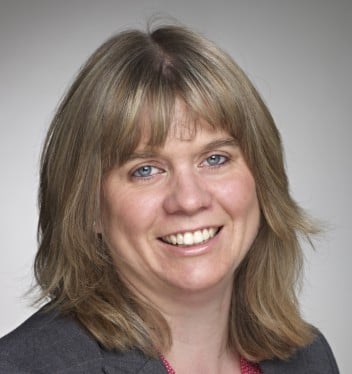- Privacy Policy
- Terms & Conditions
- Contact us
- ©Isabel Healthcare 2020
Types of Fever Differential Diagnosis - Isabel Healthcare
Fever (also known as pyrexia, high temperature or high fever) is a normal body response to a variety of conditions, the most common being infection, and is a very common medical sign. A fever occurs when the body’s temperature is elevated as a result of the body’s thermostat being reset to a higher than usual temperature. Fever is one of the body’s natural defences against bacteria and viruses that cannot live at higher temperatures. Therefore, low-grade fevers should normally go untreated unless there are other troubling symptoms. Fever is just one part of an illness and normally is no more important than other symptoms which may also occur such as cough, sore throat or fatigue.
Do I have a fever?
Amongst different people there is a normal variation in body temperature so there is no single value that is defined as fever. However, the following temperatures are generally accepted as a fever, depending on how and where the temperature is measured:
- Rectal temperature above 100.4°F (38°C)
- Oral temperature above 100°F (37.8°C)
- Axillary (armpit) temperature above 99°F (37.2°C)
- Ear (tympanic membrane) temperature above 100.4°F (38°C) in rectal mode or 99.5°F (37.5°) in oral mode
- Forehead (temporal artery) temperature above 100.4°F (38°C)
When is a fever too high?
Fevers of 104°F (40°C) or higher may be dangerous and demand immediate home treatment and prompt medical attention, as they can result in delirium or febrile convulsions, especially in young children and infants.
Fever should not be confused with hyperthermia, which is a defect in your body’s response to heat (thermoregulation), which is caused by external sources such as being in a hot environment.
What causes a fever?
The differential diagnosis of fever is large as it can occur in many diseases but its occurrence with other symptoms including chills, sweating, cough or sore throats can help narrow down the differential, and the majority of the time its cause is due to everyday diseases, including Influenza or Pharyngitis, which can be treated with self-care for a few days with a follow up to see if symptoms improve. If symptoms continue to worsen or other symptoms like stiff neck, photophobia or abdominal pain develop then immediate medical help should be sought.

Differential diagnosis of fever
Different types of fever
The nature or the type of the fever and the duration should be considered as there are many types which could help narrow down the differential diagnosis you are considering.
Continuous fever: Where the temperature remains above normal throughout a 24-hour period and does not fluctuate more than 1° Celsius in 24 hours. This type of fever occurs in lobar pneumonia, typhoid, urinary tract infection, infective endocarditis, brucellosis and typhus.
Remittent fever: The temperature remains above normal throughout the day and fluctuates more than 2° Celsius in 24 hours. This type is seen in patients with typhoid fever and infective endocarditis.
Pel Ebstein fever: There is regular alternation of recurrent bouts of fever and afebrile periods. The temperature may take 3 days to rise, remain high for 3 days and then remits over 3 days. The patient could then be apyrexial for 9 days.
Intermittent fever: In a 24 hour period the temperature is only present for some hours of the day and the rest of the time is normal. The spike can occur same time each day, every other day or every few days but is normally in a repetitive pattern. Examples of some diseases which have intermittent fever are malaria, pyemia and septicaemia.
Septic fever: A very high temperature which doesn’t improve with antipyretics can indicate a septic fever and the patient should be seen quickly and reviewed to prevent any further deterioration in their state of health.
Cyclical recurrent fevers or periodic fevers: These are recurrences of fever which last from a few days to a few weeks and are separated by symptom free intervals. This pattern of fever can be caused by recurrent infection, malignancy or non-infectious inflammatory diseases. Attacks of fever which follow the same course normally have a non-infectious cause like Still’s disease, Rheumatoid arthritis, Crohn’s disease and Bechet’s syndrome. A family history of periodic fever could indicate Familial Mediterranean Fever or Hyper-IgD syndrome.
When you don’t know what fever it is
Fever of unknown origin is defined as:
- A temperature greater than 101°F or 38.3°c on several occasions
- Lasting more than 3 week’s duration
- Where there is a failure to reach a diagnosis despite 1 week of inpatient investigation
A fever of unknown origin which is ongoing and which doesn’t have other symptoms, such as weight loss, is generally suggestive of a more serious progressive condition.
Examples of causes of fever of unknown origin:

Fever of Unknown Origin Causes
Determining the cause of the fever of unknown origin is performed by a thorough examination and review of the patient’s clinical history, including whether they have travelled abroad, then ruling in and out diseases on the differential diagnosis by performing any necessary clinical tests. Diagnosis of fever of unknown origin can be useful in drawing attention to an otherwise undiagnosed condition. Treatment of fever of unknown origin varies greatly and depends on the underlying cause. In 30% of cases the patient is discharged without a final diagnosis and in many cases the fever of unknown origin does resolve in time.
Fever in patients is a complex subject and one of the most common symptoms. If it occurs with any other symptoms, then the combination often helps determine what disease the patient has. When it occurs on its own it is important to measure the fever regularly over a time period. Then it is possible to determine if there are any patterns, does it reduce with antipyretics, how high is the temperature compared to the patient’s baseline temperature? This with a thorough examination and history will determine what the next course of action should be.
If you are a patient and unsure of your fever symptoms, place them into the free Isabel Symptom Checker for patients. If you are a physician, then you can try out our professional DDx Generator with a 1 month free trial:

Mandy Tomlinson
Mandy has worked for Isabel Healthcare since 2000. Prior to this, she was a Senior Staff Nurse on the Pediatric Infectious disease ward and high dependency unit at one of London's top hospitals, St Mary’s in Paddington which is part of Imperial College Healthcare NHS Trust. Her experience in the healthcare industry for the past 28 years in both the UK and USA means she's a vital resource for our organization. Mandy currently lives and works in Scottsdale, Arizona.
Subscribe Here!
Recent Posts
Virtual Triage: Do more questions lead to better patient outcomes?
One of the common misconceptions related to virtual triage / symptom checker tools is that the more..Webinar: Using Virtual Triage To Transform Patient Access
Outdated contact centers are posing problems for today's health systems. As longer hold times..List Of Categories
- Differential Diagnosis Decision Support
- Differential diagnosis
- Symptom Checker
- Symptoms
- Medical Error
- Patient Disease Information
- Disease
- Diagnostic Decision Support
- Clinical Decision Support
- Isabel 1 Minute Read
- Diagnosis Error
- Diagnosis Skills Cases
- Healthcare Informatics
- Medical Education
- Patient Engagement
- Clinical Reasoning
- Evidence-based Medicine
- Symptom Triage
- Nurse Practitioner Education
- Nursing Decision Support
- Partnership
- Public Health
- COVID-19
- EHR
- Patient Empowerment
- Patient Safety
- rare disease

Start your FREE Trial today
Try the Isabel Pro DDx generator for 30-days - no payment card details required.





